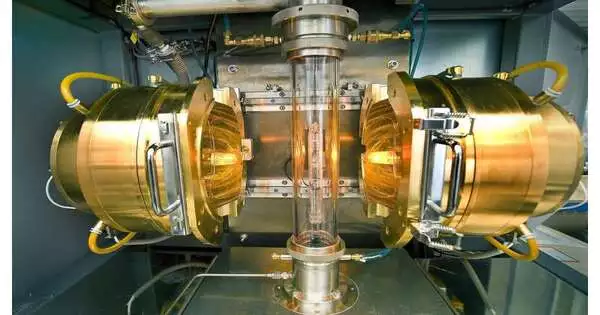Some materials change their structure to make them superconducting under certain conditions, usually extremely cold ones. “Nematic transition” is the name given to this structural change, and physicists think it offers a novel strategy for moving materials into a superconducting state where electrons can flow without any friction.
But exactly what is driving this change in the first place? The response may assist researchers in developing new superconductors as well as improving existing ones.
In surprising contrast to what many scientists had assumed, MIT physicists have now identified the key to how one class of superconductors undergoes a nematic transition.
“Our study reshuffles things a little when it comes to the consensus that was created about what drives nematicity. There are many pathways to unconventional superconductivity. This opens up a new path to superconducting states.”
Riccardo Comin, the Class of 1947 Career Development Associate Professor of Physics at MIT.
The physicists studied iron selenide (FeSe), the highest-temperature iron-based superconductor in two dimensions and the subject of their discovery. At temperatures as high as 70 kelvins (approximately -300 degrees Fahrenheit), the material is known to transition into a superconducting state. This transition temperature is higher than that of most superconducting materials, despite remaining extremely cold.
A material’s potential for use in the real world, such as the creation of powerful electromagnets for more precise and lightweight MRI machines or high-speed magnetically levitating trains, increases with the temperature at which it exhibits superconductivity.
For those and other potential outcomes, researchers will initially have to comprehend what drives a nematic switch in high-temperature superconductors like iron selenide. Scientists have observed that this switch occurs when individual atoms abruptly shift their magnetic spin in one coordinated, preferred magnetic direction in other iron-based superconducting materials.
However, the MIT team discovered a brand-new mechanism by which iron selenide shifts. In iron selenide, the atoms undergo a collective shift in their orbital energy rather than a coordinated shift in spins. Although it is a subtle distinction, it opens up new possibilities for discovering novel superconductors.
Riccardo Comin, MIT’s Class of 1947 Career Development Associate Professor of Physics, states, “Our study reshuffles things a bit when it comes to the consensus that was created about what drives nematicity.” Unconventional superconductivity can be achieved in a variety of ways. This opens up a new way to understand superconducting states.
In a study that was published in Nature Materials, Comin and his colleagues presented their findings. At Argonne National Laboratory, Gilberto Fabbris, Yongseong Choi, Jong-Woo Kim, and Philip Ryan are co-authors, as are Connor Occhialini, Shua Sanchez, and Qian Song.
Following the thread The Greek word “nema,” which means “thread,” is the root of the word “nematicity.” It is used, for instance, to describe the nematode worm’s body, which resembles a thread. Conceptual threads, such as coordinated physical phenomena, are also referred to as nematics. Nematic behavior, for instance, can be observed when molecules assemble in coordinated lines in the study of liquid crystals.
Nematicity is a term used by physicists to describe a coordinated shift that has propelled a material into a superconducting state in recent years. The material as a whole expands infinitely in one particular direction as a result of strong interactions between electrons, similar to microscopic taffy, allowing electrons to flow freely in that direction. The primary concern has been the nature of the interaction that results in the stretching. This stretching appears to be caused by atoms shifting their magnetic spins in the same direction on their own in some iron-based materials. As a result, it has been assumed by researchers that most superconductors based on iron undergo the same spin-driven transition.
Iron selenide, however, appears to defy this trend. It also appears to lack coordinated magnetic behavior, despite the fact that the material enters a superconducting state at the highest temperature of any iron-based material.
According to Sanchez, an MIT postdoc and NSF MPS-Ascend Fellow, “iron selenide has the least clear story of all these materials.” There is no magnetic order in this case. Therefore, a careful examination of how the electrons arrange themselves around the iron atoms and what happens when those atoms stretch apart is necessary for comprehending the origin of nematicity.”
A super continuum In their latest research, the researchers used millimeter-long, ultrathin samples of iron selenide that they adhered to a thin titanium strip. By physically stretching the titanium strip, which in turn stretched the iron selenide samples, they imitated the structural stretching that occurs during a nematic transition. They looked for any properties that changed in a coordinated manner as they stretched the samples one micron at a time.
The team used ultrabright X-rays to observe how the electrons of each atom and the atoms in each sample were moving. They observed a distinct, coordinated shift in the atoms’ orbitals after a certain point. The energy levels that an atom’s electrons can occupy are known as atomic orbitals. In iron selenide, electrons can possess one of two orbital states around an iron particle. The selection of a state is typically made at random.
However, the researchers discovered that as the iron selenide was stretched, its electrons began to strongly favor one orbital state over another. This flagged an unmistakable, composed shift, alongside another instrument of nematicity and superconductivity.
“What we’ve shown is that there are different basic physical sciences with regards to turn versus orbital nematicity, and there will be a continuum of materials that go between the two,” says Occhialini, an MIT graduate understudy. “When looking for new superconductors, it will be important to know where you are on that landscape.”
More information: Occhialini, C.A., et al, Spontaneous orbital polarization in the nematic phase of FeSe, Nature Materials (2023). DOI: 10.1038/s41563-023-01585-2. www.nature.com/articles/s41563-023-01585-2





